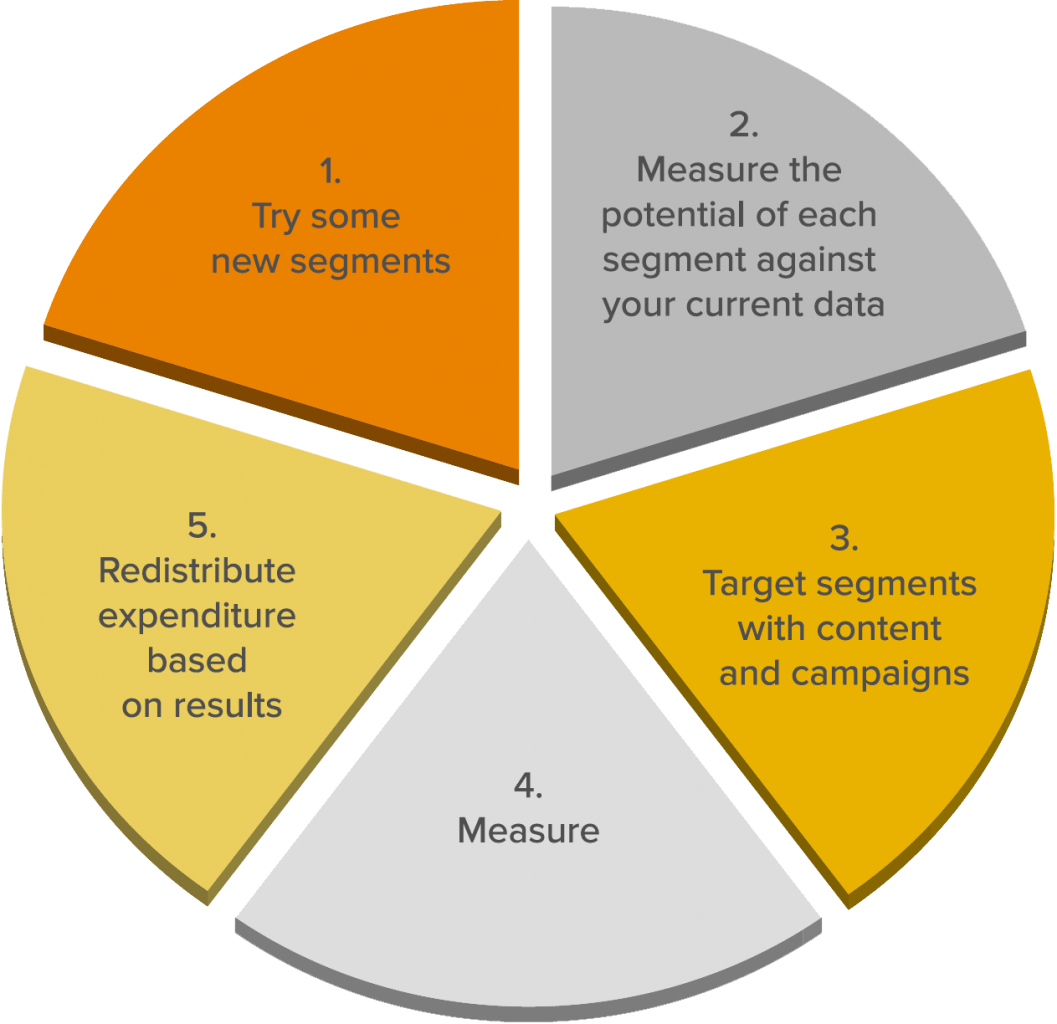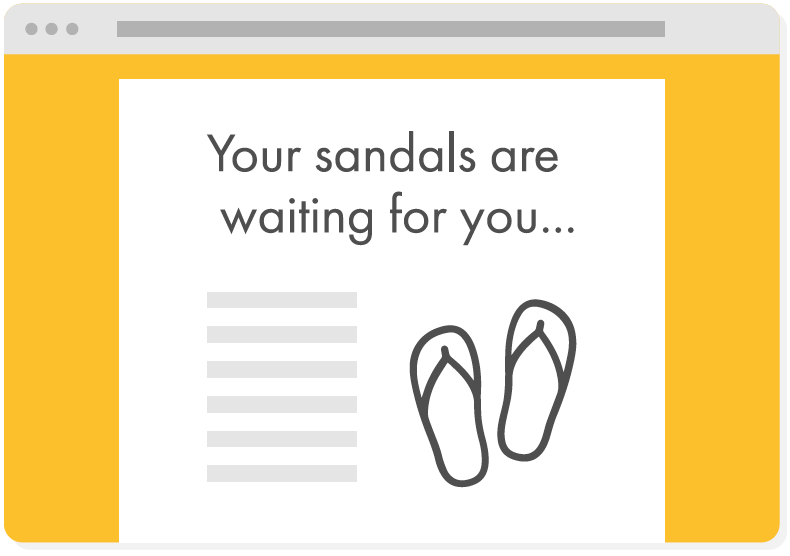EBOOK
How to Use Retail Data in Fashion E-Commerce
Published: Sep 6, 2017
Introduction
As a fashion retailer, you have vast amounts of data at your disposal. For this you can thank your customers. Whether they’re researching, shopping or reviewing products, your customers leave a trail of data in their wake.
Of course, your retail data is no longer limited to transactions on desktop or purchases in store.
Fashion data flows in from multiple channels and in varying forms – whether it’s a customer researching products on a tablet or someone leaving you a review on Facebook.
In the not so distant past, these unregulated swathes of data were almost overwhelming. But now data is an online fashion retailer’s lifeblood, and something you can harness to gain a vital edge over your competitors.
With the recent rapid advancements in the tools available to collect and analyze your data, the fashion industry’s confidence in using data to improve customer journeys has grown.
Not only that, using this data also helps you refine your business process – for example, managing your inventory or finding the right balance between your online and brick-and-mortar offering.
However, with all this big data comes big decisions.
With so much to analyze, knowing what data sets to focus on and – most importantly – how to use them isn’t easy.
To give you a helping hand, this guide offers you a rundown of the types of data you can collect and how you can then use that data to improve your customer experience.
Analyzing your data
Luckily, with analytics tools and a smart digital marketer, it’s now fairly easy to use the data from your website to get a picture of how your visitors are using your site (and how well it’s working).
There’s plenty of data to analyze: visits, traffic source, devices, bounce rates, clicks, dwell time, abandonments, conversions, average order values…the list goes on.
Obviously, this data is the meat and drink of your onsite optimization efforts. But you don’t want to get too bogged down focusing on metrics that aren’t making a difference to your overall customer journey or your bottom line.
To use your data in a way that will improve your customer journey you need to look from a broad perspective with a long-term mindset. And to succeed with this you’ll need to look at both quantitative and qualitative data.
Quantitative and Qualitative Analysis
Just so we’re completely clear, what kind of things do these data sets cover?
Quantitative:
This is the kind of data we’ve listed above. It’s about how your customers use your site, your traffic – where it’s from and how much there is, your conversions etc.
It’s great for finding patterns and customer habits in your data
Qualitative:
This kind of analysis is more subjective. It’s about the why: why do people use you over a competitor? How is your brand perceived? To find the answers you need to go beyond numbers and to get to know your customers.
The goal is combining these two types of analysis – once you’ve done so you can make more realistic analysis around your Customer Lifetime Value – and look at ways to increase it.
Your challenge is to use the data from both to ensure you’re engendering long-term customer satisfaction and loyalty over short-term gains – at the end of the day, that’s where your profit lies.
Forget Channels: Merge Your Data
As a modern fashion site you can’t afford to think in channels – your brand is your brand, wherever your customer comes across it.
As a result, the data you gather that doesn’t come directly from your desktop and mobile sites are still just as important.
Currently, brands are only using a fraction of their data. An Econsultancy study said that just over half are using email data, 30% are using social media and only 21% are using data from mobile apps.
This has to change. By using all your data points you’ll get a much clearer all round view of your customers and their behavior.
Or – in e-commerce-speak – you’ll get closer to the rightly vaunted single customer view (the ability to see a customer’s whole journey, across every channel).
Other Retail Datapoints To Focus On
So, as well as your desktop and mobile sites, which other data points should you have an eye on?
Social: social channels get high engagement with customers – both with direct feedback and reviews, they’re also a key place to pick up on trends and products your customers like.
Customer service: whether it’s emails or calls you need to record the interactions with your customers.
In store: point-of-sale info, loyalty cards, any digital collateral in store and video analytics all provide key data points.
Supply Chain: your orders, shipments, inventory and alike are ultimately key areas you need to be able to track and have data readily available.
Emails: your open rates, engagement, conversions etc from traditional emails and remarketing all offer valuable insights. Having a link between your email and onsite offering makes this data even more actionable.
Advertising: any direct marketing materials – flyers, coupons plus TV/radio.
Weather: knowledge of long-term weather patterns helps avoid over ordering on seasonal inventory. You can also use short-term forecasts for real-time marketing – pushing products and themes to suit the weather.
Events: holidays and localized events all present opportunities for targeted products and advertising, the more data you have to inform you the easier this will be.
Mobile apps: despite being part of your mobile offering, the data from your apps may be stored elsewhere but with app usage on the rise it’s obviously a key part of the puzzle that makes up your customers’ behavior.
Once gathered, all this data shouldn’t remain in channels.
The more compatible and integrated your data, the easier it is to analyse and gain meaningful insights from – both for your business process and customer experience.
To make this happen, when you gather your data from various sources the data fields and categories capturing that data need to be as uniform as possible, to facilitate parity across your full analytics or product suite.
The simple example below demonstrates how a company using multiple CRMs or data systems can ensure that data remains coherent.

In this case, the matching field names in each product ensure that customers who have opted out of emails via one channel won’t then be targeted again through another CRM. That preference is easily and automatically shared between the two systems.
How To Make Sense Of Your Data
Even if you have all the data in the world, if you can’t make sense of it – it’s fairly useless.
However, by harnessing your data and applying it properly you can make some healthy gains: big data has the potential to increase net retailer margins by 60%.
You want to analyse the right parts of your data – to unearth the nuggets that will help have the biggest impact on your customer experience.
Find patterns and ask the right questions
Once you’ve got both your quantitative and qualitative data you need to analyse it by checking for patterns and asking questions.
The most important part of this is asking the right questions. There will be some clear patterns, but you also need to do a lot of digging and asking relevant questions.
For example: “What products are likely to trend on social media and when?”
Using social data, plus their knowledge of trends enables your buyers to forecast and order the right products – timing orders so your supply chain has the right levels of inventory when trends break.
Your data should help inform your answers, but without asking the right questions you’ll never harness the full power of the data at your disposal.
Experiment on your existing customer segments
Your customer segments are a useful way to experiment with what works on your site.
The segments you have will depend on your current goals, but examples of common segments are:
- Visitors – first time, repeat, logged in, guests, VIPs…
- Source – where are your visitors coming from – search engines, PPC, social…
- Device – desktop, smartphones, tablets, smartwatch etc..
- Top customers – your high spenders
- Location – see differences in behavior by location
- Demographic data – gender, income, age
It’s likely you’ll also have more specific segments based on the average frequency of your purchases and average order values.
You may also discover from your data analysis that you’re missing a big opportunity and need to set up some new segments.
Whatever your segments consist of, the following outline gives you a good basis from which you can use your segments and data insights in tandem to optimize your site.

This a handy way to measure the changes you implement after analysing and questioning your data. By testing new campaigns on existing segments you can accurately measure both the long and short-term impact your changes have.
If the changes are successful you can back your campaigns – if not, it’s time to look at the data again to question why.
Personalize
By removing the rigid channels around all your data you can provide coherent, authentic, targeted and timely content and messaging across every channel.
In other words, you can personalize.
Your customers have come to expect personalization: 83% of consumers see value in being recognized with personalized experiences across all devices. 65% of shoppers consider personalizing the shopping experience based on past shopping behavior a valuable service
Your data on where a customer has come from, their past behaviour and their current onsite behavior can be used to provide real-time, personalized messaging.
Let’s say a visitor has spent a while researching your white oxford shirt, but hasn’t purchased. Offering them free delivery on that shirt as they go to leave both improves their customer experience and increases the chance of conversion.

Or maybe you know a customer has bought a couple of pairs of sandals in the past. It’s coming up to summer so you reserve them a pair of your new line of sandals before they’re released and let them know via email or when they come to your site.

This kind of individual experience goes way beyond targeting broad segments and is key to providing the kind of shopping experience your customers desire.
And it’s not only your customers who’ll benefit – conversion rates are 5.5 times higher when customers click a personalized recommendation.
The only way to deliver this kind of individualized customer journey is through the smart use of data.
By getting to know your customers and personalizing based on their data you’ll find you can reduce abandonment, create coherent customer journeys and increase conversions. What’s not to like?
Predict
The ability to preempt your customers’ behavior is the marketing holy grail.
Rather than reacting to problems, you can anticipate them and eradicate issues before they arise. Just imagine the positive influence this will have on your customer journey.
Analysis of a customer’s past and present behavior can be used in tandem with data from other users to find patterns. This multi-faceted picture of your customers, based on both qualitative and quantitative data, means you can start to predict what they’ll do next.
In fashion the ability to predict what your customer wants before they know themselves opens up a ream of exciting possibilities – from highly accurate subscriptions to hyper-personalized recommendations of future trends.
In terms of the broader picture, this knowledge also helps you to start predicting longer-term trends and ensures you can meet demand by supplying the right products.
Predicting and preempting your customers’ wishes and desires will undoubtedly take your customer experience to another level. The only way you’ll scale these heights is by collecting, analysing and contextualizing your data.
Embracing Data
To finish up – both the present and future of fashion eCommerce are heavily intertwined with data. Every stage, from customer acquisition, conversion and satisfaction can be measured and enhanced with data.
But remember, in order to use your data effectively you need to look at the bigger picture. Your customers’ opinions and feedback matter – and sometimes patterns found in your data can’t replace that. In a similar vein, the experience and views of buyers and designers shouldn’t be shunned entirely in the name of data.
Fashion remains a creative industry. But data is by no means an antithesis to creativity if you use it to inform and optimize your strategy, rather than dictate it.
Your mission is to combine creativity and the subjective elements of your site along with quantifiable data to create an exceptional customer experience.